Remember When
John Pound
 It’s that time again. Let’s sit back, relax, and take a trip down memory lane with those individuals who inadvertently played a role in our childhood. This time out we’re chatting with John Pound, artist of the legendary Garbage Pail Kids sticker line for Topps. With between 500 and 600 of the characters under his artistic belt, his work has been treasured by kids (and adults) for generations.
It’s that time again. Let’s sit back, relax, and take a trip down memory lane with those individuals who inadvertently played a role in our childhood. This time out we’re chatting with John Pound, artist of the legendary Garbage Pail Kids sticker line for Topps. With between 500 and 600 of the characters under his artistic belt, his work has been treasured by kids (and adults) for generations.
TrunkSpace: Garbage Pail Kids transcended trading cards to become a part of pop culture. To this day they remain a symbol of the 1980s, recently being seen as part of set dressings in the ABC television series “The Goldbergs.” What does it feel like to have been a part of something that not only found an audience, but helped define a generation?
Pound: I’m glad people liked them. From working on many obscure projects in comics, I had no idea they’d be so popular. They were just fun to make.
TrunkSpace: For those who aren’t familiar with your story, can you tell us how you got involved with the Garbage Pail Kids line and how many characters you did the art for?
Pound: I started my art career by doing underground comics and heavy-metal style fantasy art prints and book covers. Topps art director Art Spiegelman was also an underground cartoonist. He often hired underground artists to do humor art projects for Topps. (I was in California, and he was in New York.)
He called me up one day in 1984 and asked me to paint a few Wacky Packages parody stickers for Topps. I said sure. I did 9 paintings, from idea sketches they sent me. One, called “Garbage Pail Kids,” was not used, but in a few weeks Topps decided to start a new sticker series using that name. They asked some artists to come up with idea sketches and a color rough example of how they could look. Evidently nothing was working, so they also asked me to do some ideas. Somehow, it was easy, and lots of ideas came. I sent in a pile of notes and sketches. I got the job. Then it was just a matter of painting very fast, a painting a day, for the 44 stickers they needed. When GPK stickers hit the market, sales were great, so Topps asked me to paint more GPKs, for a 2nd series, and so on.
They resumed again in 2003, so all together, I did between 500 and 600 GPK paintings. About half were based on my ideas, and the rest were from ideas other Topps artists came up with. (Mark Newgarden, Jay Lynch, and others.)
TrunkSpace: Many parents and school administrators of the 1980s made Garbage Pail Kids a cultural villain, much in the way they did the heavy metal  music of the time. Was that something you were consciously aware of while working on the line… the idea that your artwork was being seen as something that could “poison” the minds of kids? And, was there ever any push-back from Topps to, I guess, purify the line in some ways to appease the parental masses?
music of the time. Was that something you were consciously aware of while working on the line… the idea that your artwork was being seen as something that could “poison” the minds of kids? And, was there ever any push-back from Topps to, I guess, purify the line in some ways to appease the parental masses?
Pound: Art Spiegelman’s idea was to make GPKs mean, nasty, gross, and disgusting. And ugly. Use plenty of shock value, which would make them attention-getting. My own idea was that these little paintings also had to feel good to look at. Mix in some pleasure with the pain.
TrunkSpace: In many ways, Garbage Pail Kids are the grandparents of toy lines of today such as The Grossery Gang and The Trash Pack. Some of them have caught that same lighting in the bottle, but none of them have achieved the same level of pop culture crossover as Garbage Pail Kids. Why do you think the GPK line connected with so many people? Was it a matter of the right product at the right time?
Pound: One easy answer, I know it sounds superficial, is that the name “Garbage Pail Kids” sounds like “Cabbage Patch Kids”. Not only does it have an attitude, but it sounds so familiar, and so famous. And when something is familiar, it’s easier to sell.
TrunkSpace: Your designs did not only hit on the gross out factor, but at the same time, there was an accessible cuteness to the characters that sort of humanized them. Was that something you consciously thought about during the creative process of designing new characters?
Pound: Yeah, I like cuteness in cartoons. Since I had to look at these little kids while I painted them, I wanted them to feel good to look at. Plus I thought these little kids I painted secretly enjoyed being weird and misfits and rebels and disgusting. At least, some of them.
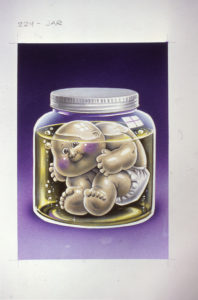 TrunkSpace: Were there any characters or designs that you worked on back in those early days that were deemed too disgusting or controversial to move forward with?
TrunkSpace: Were there any characters or designs that you worked on back in those early days that were deemed too disgusting or controversial to move forward with?
Pound: A few were, like a baby in a jar of formaldehyde. And an Abe Lincoln GPK, complete with bullet holes.
TrunkSpace: You have been working on some really innovative and captivating artwork that is based on computer code. Can you tell us how that came to be and how it has developed since you first started working in that style? As technology advances, does the art form advance as well?
Pound: I got a computer when I was working on Garbage Pail Kids, something to play around with. I started looking at all kinds of art made with computers, especially art made by writing code. I liked the painter Harold Cohen’s AARON early experiments with code art. They looked like kids’ drawings, but strangely mechanical.
Which made me wonder, since I was a cartoonist, what kind of comics could a computer program make if it randomly wrote and drew everything? At that point I realized I had to learn a bit about writing code, to make it happen. I bought some programming books and a laser printer. I was stumped at first, there was so much to learn. Months later, I realized all I needed to get started was a really minimal, dumb version of a comics-drawing program. A simple little figure, with a horizon line, and a nonsense word balloon overhead, repeated in panel-boxes, in a grid. Soon, I had instant comics!
I kept playing around with the code, adding more features, details, layouts, color, etc. Over the last couple decades, I adapted my comics-drawing code to make randomly generated art prints and sketchbooks. And now I’m learning how to make code-generated animations, videos, and sounds.
TrunkSpace: For those who aren’t technically savvy, is there a sort of layman’s way of explaining how an idea goes from your head to the final product? 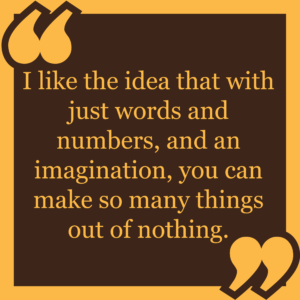
Pound: Basically, I write words and numbers in one window (for the computer code), and in another window, the art magically appears. (Unless I make a mistake.) My code draws everything as a combination of simple shapes.
Instead of starting with a blank page, I usually copy my previous day’s code, and then make little changes in it, to add new designs, colors, or layouts into the code. I save it and test it, every few changes. If things go wrong, I just use “Undo” to go back a few steps to a version where it was last working okay.
This process makes my code grow longer over time, as I add more stuff it can do. I like to find new ways to combine parts together.
TrunkSpace: What do your code art pieces say? Are they telling a story or are they a transfer of visuals from your brain to the page?
Pound: The code art started as a “fake comics” project, and grew into a fake-art-making process. As the work gets deeper and more intricate and more entertaining, who can say if it’s “real art” or not?
It’s usually not a one-way process of having an image first and transferring it to the page. It’s more like I see things the code has drawn, and get ideas for ways to take it farther, or combine parts in a new way. Like a fake wallpaper, or a fake landscape design, with random parts and figures in it.
It’s like making up a game, to see what happens visually, with certain rules I make up. Sometimes I think the simple cartoony art style allows more room for imagination and relaxation than a heavily-rendered 3D-style image would. More room to breathe, perhaps.
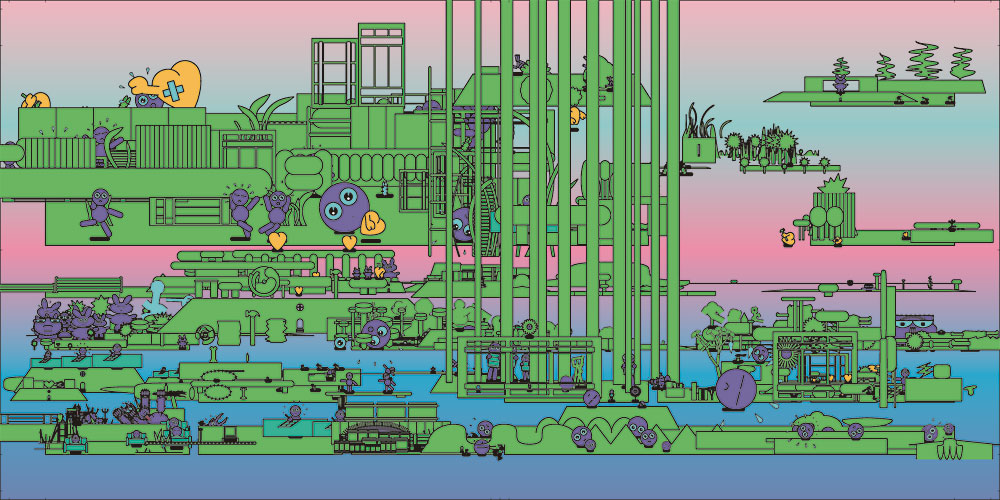
TrunkSpace: We feel like there is a really interesting lesson for kids in your code art. Often times kids are taught that numbers are numbers and they serve a function… one that can get lost on those who think with a creative brain. Here, you’ve used numbers to create beautiful works of art. There’s an old Harry Chapin song called “Flowers Are Red” where a teacher tells a young boy that he has to color a flower the color nature intended and he responds, “There are so many colors in the rainbow/So many colors in the morning sun/So many colors in the flower and I see every one.” The modern day version of that song could be written with your art in mind. Anything can be anything with an open mind and a unique perspective.
Pound: I like to think that most kids can learn to do code art. I was comfortable with basic math and English, but I started with no background in code. I learned a few bits at a time to make code make some marks on paper or on the screen. I like the idea that with just words and numbers, and an imagination, you can make so many things out of nothing.
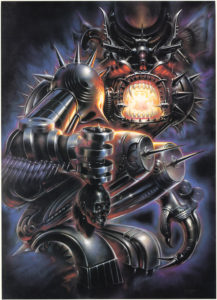 TrunkSpace: Finally, before you go, John, what can people be on the lookout for this year in terms of your art and what is the best way for people to follow the latest?
TrunkSpace: Finally, before you go, John, what can people be on the lookout for this year in terms of your art and what is the best way for people to follow the latest?
Pound: I’m planning a show with And/Or Gallery (Pasadena, CA), with some code art prints and videos. ( http://www.andorgallery.com ) (Currently scheduled for May 2017.)
My website www.poundart.com has both my illustration work and some code art.
My Tumblr blog http://codecartooning.tumblr.com has hundreds of code artworks, plus some code-generated video experiments.


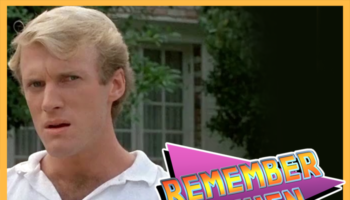
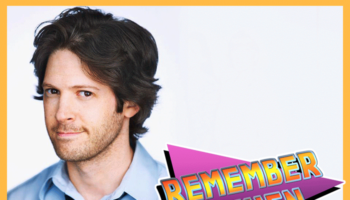
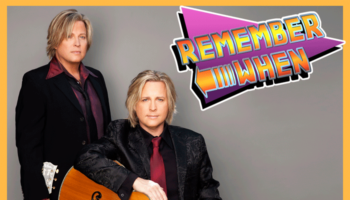
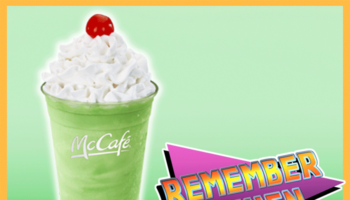
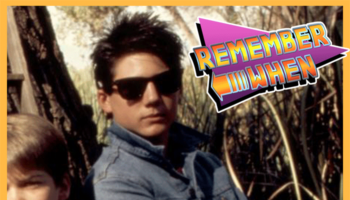
Great article. Thanks for sharing.
Can you add in the date of the interview?
Thanks